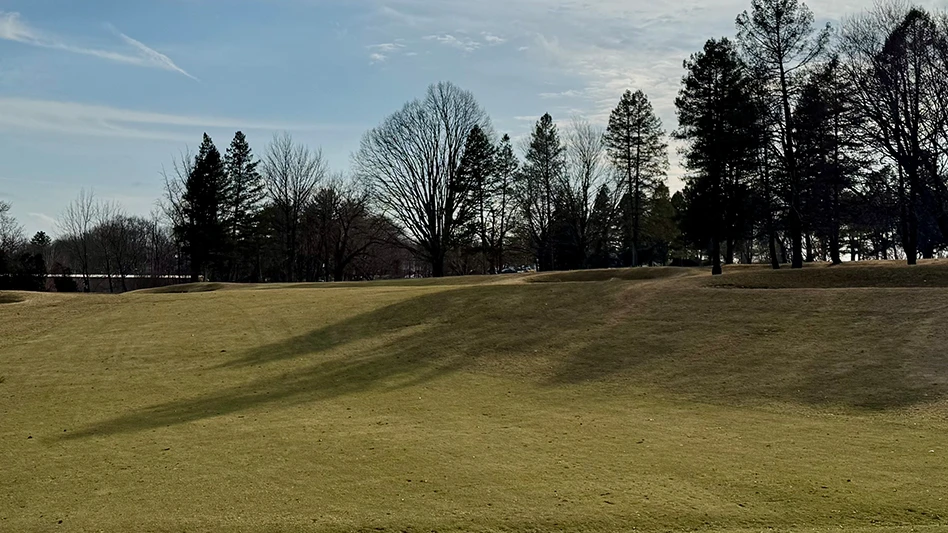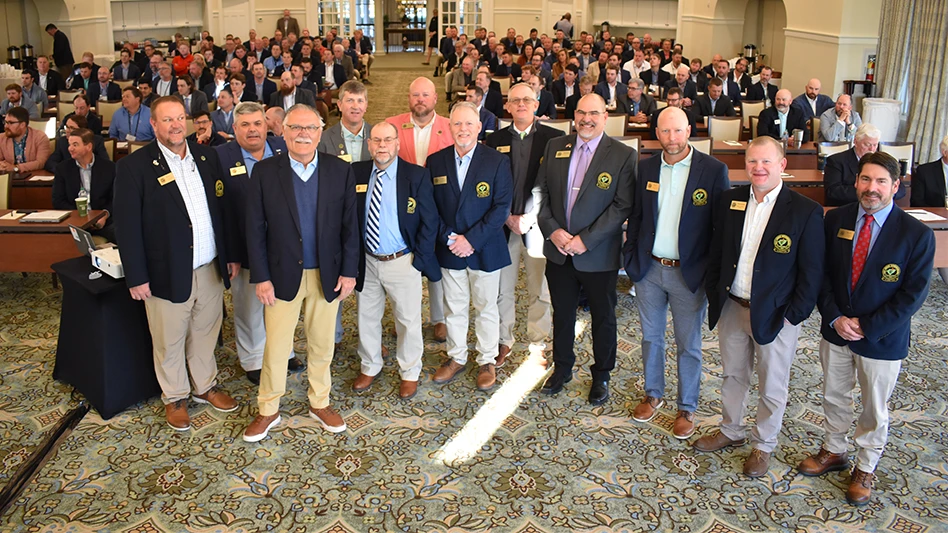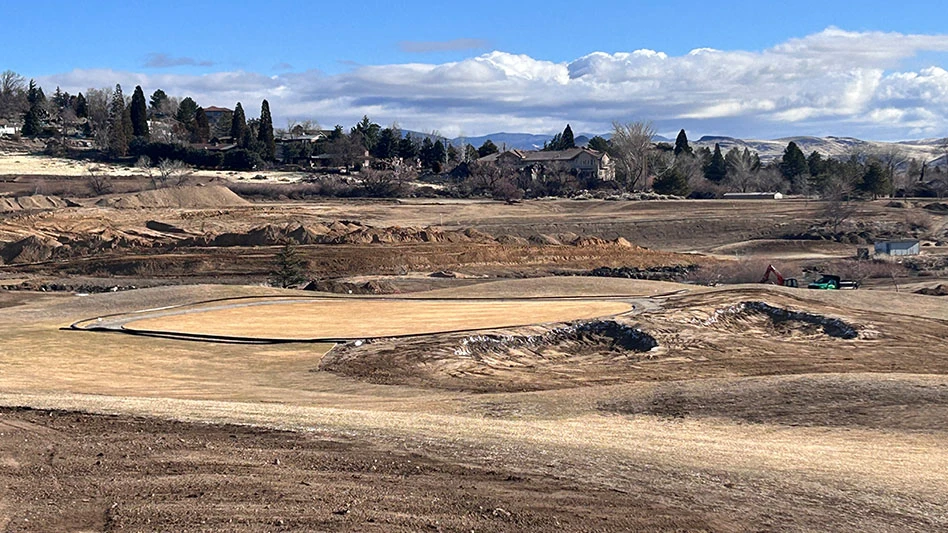
Want to find out what the future of golf might look like? Walk around a century-plus-old short course that boasts the oldest hole in all of San Diego.
Located within sight of the city skyline — and, every four or six minutes, within sound of San Diego International Airport — The Loma Club traces its history to the early 1900s, when it was still a part of San Diego Country Club, and at least one of its holes remains almost entirely unchanged since then. Over the years, the course has been a part of Point Loma Golf Club — which was owned by sporting goods giant Albert Spalding during the last years of his life — and operated as a military course on a naval training base. Legends passed down say it almost closed a time or three. Which would have been a shame, because today The Loma Club provides a template for how to utilize limited space and reach a totally different audience.
Nine holes, none longer than 204 yards from the tips. A pair of nine-hole miniature golf courses. An outdoor pro shop just feet from 21 tables and even more Adirondack chairs where league regulars and hack newcomers alike can listen to concerts and watch sunsets. And dogs. Lots of dogs.
The additions and renovations stemmed from a European vacation during which owners Luke Mahoney and Laura Johnson visited Mahoney’s cousin, Oliver Mahoney, and checked out some of his latest work: designer miniature golf courses. “He took us to one that had a cocktail concept and we were just blown away,” says Johnson, who owns a local distillery with Mahoney. “An indoor mini golf course that books out weeks in advance? What the hell is this? So, we got the bug in our head: we have to take this back to San Diego.”
They focused on The Loma Club, where they had started playing a few years earlier and both the price and the time were right. Along with Oliver and another business partner, the couple purchased The Loma Club in late 2019, finalizing the deal less than three months before the start of the pandemic and the subsequent (and originally unexpected) golf boom. Various permit processes and renovations closed the course for much of 2020, but tee sheets filled up almost immediately after reopening for both the traditional short course and the new miniature golf courses, which are marketed under Mahoney’s and Johnson’s Tappers brand. There were far more days than not when Mahoney — whose New Zealand family tree includes at least one golf pro — and general manager Trevor Marcone couldn’t even sneak out to play a hole or two.
Maintenance provided a challenge, too. The miniature golf courses need none, but the classic nine required some help early during the pandemic. The Loma Club, however, struggled to fill its crew, even going without a full-time superintendent for stretches. Today, Armando Gutierrez leads a small crew that has stabilized along with the business operations.

“Getting Armando the help he needs out there so we can keep the course in the shape we want it at was important,” Marcone says. “If you ask him, there are 30 different kinds of grass out there because the course has been here since the early 1900s.” The crew, which also includes Tim Moore, Cole Lemmel and a new weekend-part-timer, allows Gutierrez to finally focus on larger projects. “There’s a lot of work to be done,” Marcone adds, “but I think we’re going to get there sooner than later, which is exciting, because there aren’t many places like this in San Diego.”
The course winds through what is now a rare green spot in the neighborhood, surrounded today on two sides by homes and businesses and on the other two by Liberty Station, a shopping and entertainment district that has sprouted out of the old naval base. The views from the fourth and fifth holes of the city — and, yes, the airport — are stunning, distant skyscrapers seemingly all as tall as a golf tee, taxiing planes narrower than a new ball.
“There’s a lot going for this place that’s not just golf,” Marcone says. “But I try to make sure that everybody knows the core of this place is the historic golf course.”
The course might not exist today if not for Spalding, who relocated from the Windy City in the early 1900s and, bankrolled by selling balls, gloves and 700 acres of Chicagoland suburbs, started investing in San Diego. He constructed a personal nine-hole course on a hillside that is now part of Sunset Cliffs Natural Park, and later developed the Point Loma Golf and Country Club, which was originally 18 holes and is around the same plot as the current Loma Club. Holes disappeared, the name changed — the course was long called Sail Ho — and Spalding himself died in 1915, just a few years after finishing the course, but both the spirit and most of the modern seventh hole remained.
Good bones were still in full view when Mahoney and Johnson entered the story, and they knew the significance of what they were purchasing.
“We were interested in mini golf and cocktails,” Mahoney says, “but we know nine holes can be fun and approachable. I hate to say it’s the future, but it is catering to people who are like us, who are busy. I don’t have six hours to go play golf, but I play here two or three times a week.”
“Tappers is the whole reason why we took this place over,” Johnson says, “and we’ve fallen in love with the casual, nine-hole vibe too.”
The early success of The Loma Club has provided a template for how to expand regionally if not nationally: find a good nine-holer with at least a little space on site, refurbish the course, revamp the dining room, and add either nine or 18 miniature holes. Sounds far less complicated than it really is.
“We would love to do more of these throughout the country,” Mahoney says. “It’s easier to go build indoor miniature golf courses, bar concepts, but I think we would love to acquire or partner in other cities and do what we did here.” A handful of cities in Arizona, Texas and, of course, more in California make sense. Florida and even South Carolina could also be future targets.
For now, The Loma Club is more than enough. There are projects to finish and more to start, tee sheets to keep filling, and nine classic holes to maintain.
Some of the players who walk The Loma Club four or five times every week “are scratch golfers,” Mahoney says, “but they don’t really want to go to a country club and deal with the B.S. of that.” “Some of them have played here since they were kids,” Johnson says. “Some of them learned to play here with their grandpa. And we just pinch ourselves that somehow we get to be the stewards of this place.”

Explore the July 2022 Issue
Check out more from this issue and find your next story to read.
Latest from Golf Course Industry
- Atlanta Athletic Club approves funding for master plan
- PBI-Gordon introduces new field development team
- The Cabot Collection announces move into course management
- Carolinas GCSA raises nearly $300,000 for research
- Advanced Turf Solutions’ Scott Lund expands role
- South Carolina’s Tidewater Golf Club completes renovation project
- SePRO to host webinar on plant growth regulators
- Turfco introduces riding applicator





